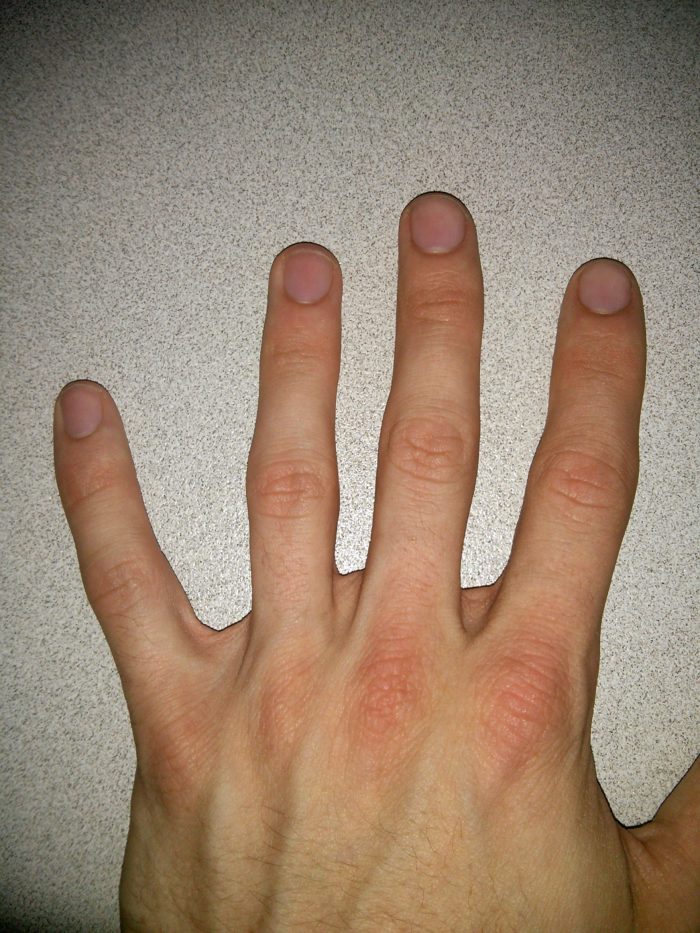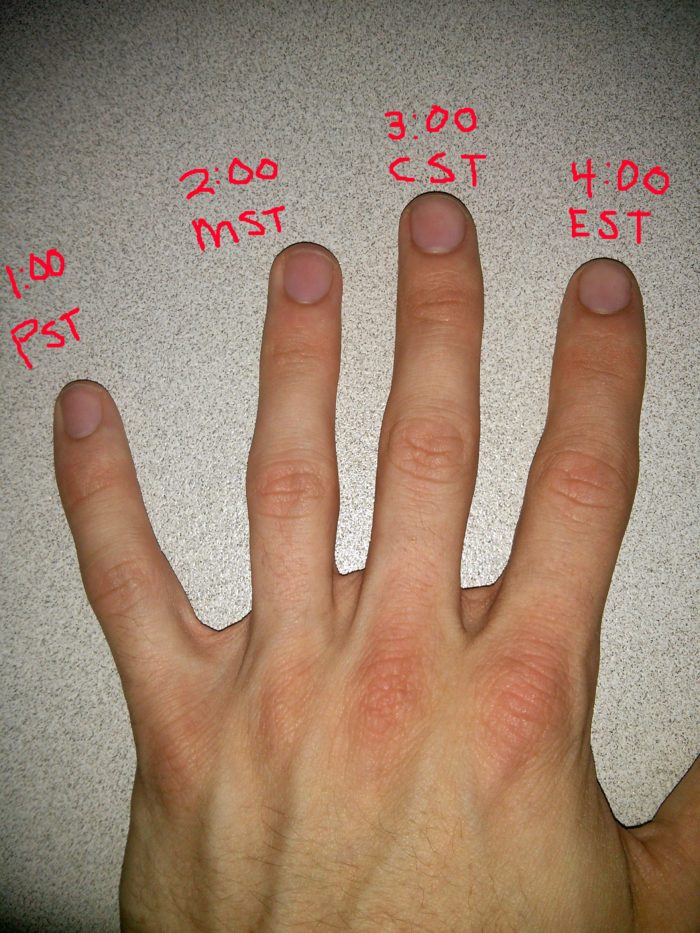As a professional (and as a modern young adult, in general), I spend a lot of time communicating across time zones. I’ve long since lost count of the number of missed calls and connections due to a hiccup in time zone calculation — even calendar invites aren’t immune.
There’s four time zones in the continental US. So, quickly: If it’s 1:00pm in San Francisco, does that mean it’s 4:00pm or 5:00pm in New York?
You’ll probably get the right answer…but it takes a step and a half longer than if I’d asked you “Quick: What’s 1 + 3 ?”
Luckily, I always keep a map of the continental US on-hand.

Don’t see it? Look again:

There. Now sorting out the common time zones is as easy as counting on your fingers.
Two other tips:
- Whenever possible, schedule appointments in your counterparty’s native timezone. Because it’s a simple, thoughtful, and courteous gesture. And because it puts the onus of sorting the time zones on you, and because of your hand map, you’re an expert.
- This doesn’t exactly solve for Daylight Savings Time. You’re generally safe for major US cities. Most of Asia, Africa, and South America don’t bother with daylight savings. The UK observes Daylight Savings Time, (on your world map above, London is usually your right ring finger) but the start and stop dates are different than they are in the US. Tread carefully — or maybe write “I’ll call you at 4:00pm EST which should be 9:00pm locally” so there’s some safety net and paper trail.
Admittedly, this mnemonic fixes a problem which seems fairly small and innocuous. That said, it absolutely makes my life easier on a weekly basis — if only by a hair. In striving to outsource as much of my menial mental work as possible — which I encourage of all of my intelligent friends — this is an easy starting point.
